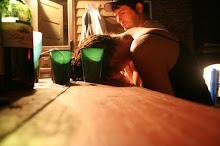
"Post Rap" acrylic 60x96 inches

"Back to Scrape" acrylic 82.5x115x44 inches
I found this painting interesting because of the several
panels in which its made up of, and also the placement of it, in the corner. Seeing this, I want to create this, it has given me many new ideas, and things I'd like to test out in my own art work, and hopefully for thesis, you will see multiple
panels in my artwork.

"Hot Topic" acrylic 60x72 inches
The idea of using mainly black and white or a monochromatic style painting is a great thought. Sometimes I get carried away with the amount of colors I use, and the amount of paint I use. This painting reminds me, that you
don't need a thousand colors to make it interesting or "colorful," and that by using less, you get more. Also, the black paint is quite overwhelming in this painting, which is something I tend to do if I find myself struggling with a
painting, I like to rely on obscene amounts of black paint, and cover it up, then start again. But, after covering up most of it, maybe leaving it would look even better than starting something new.

"
Korner" acrylic 42x120 inches
Now, when I buy canvases, I tend to get the larger rectangular ones, or the square ones, because they give more space, or its a
subconscious thing I do, because of right angles and shape, I want it to be
evenly spaced? I
don't know. However, I really love the idea of extending your canvas, and especially not so evenly, but like the 2 left canvases in this painting, are uneven and
don't line up on the bottom, but they do on the top. This is also a new idea that has struck my interest, and I would like to explore these thoughts more so, in my own work, creating a sculptural sense to the painting.

"
Freshkills" acrylic 92x160 inches































